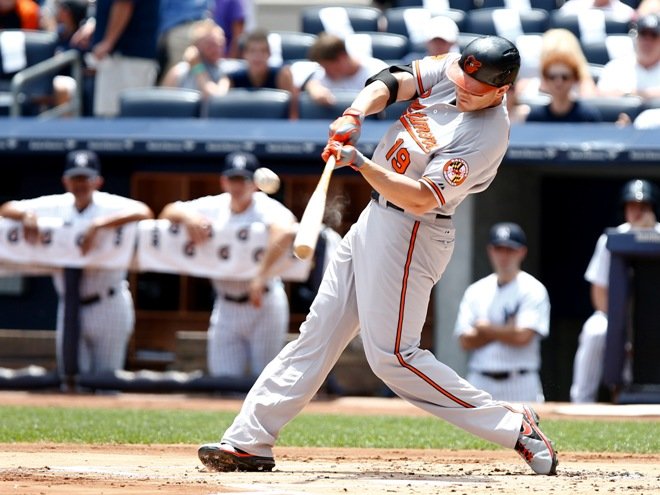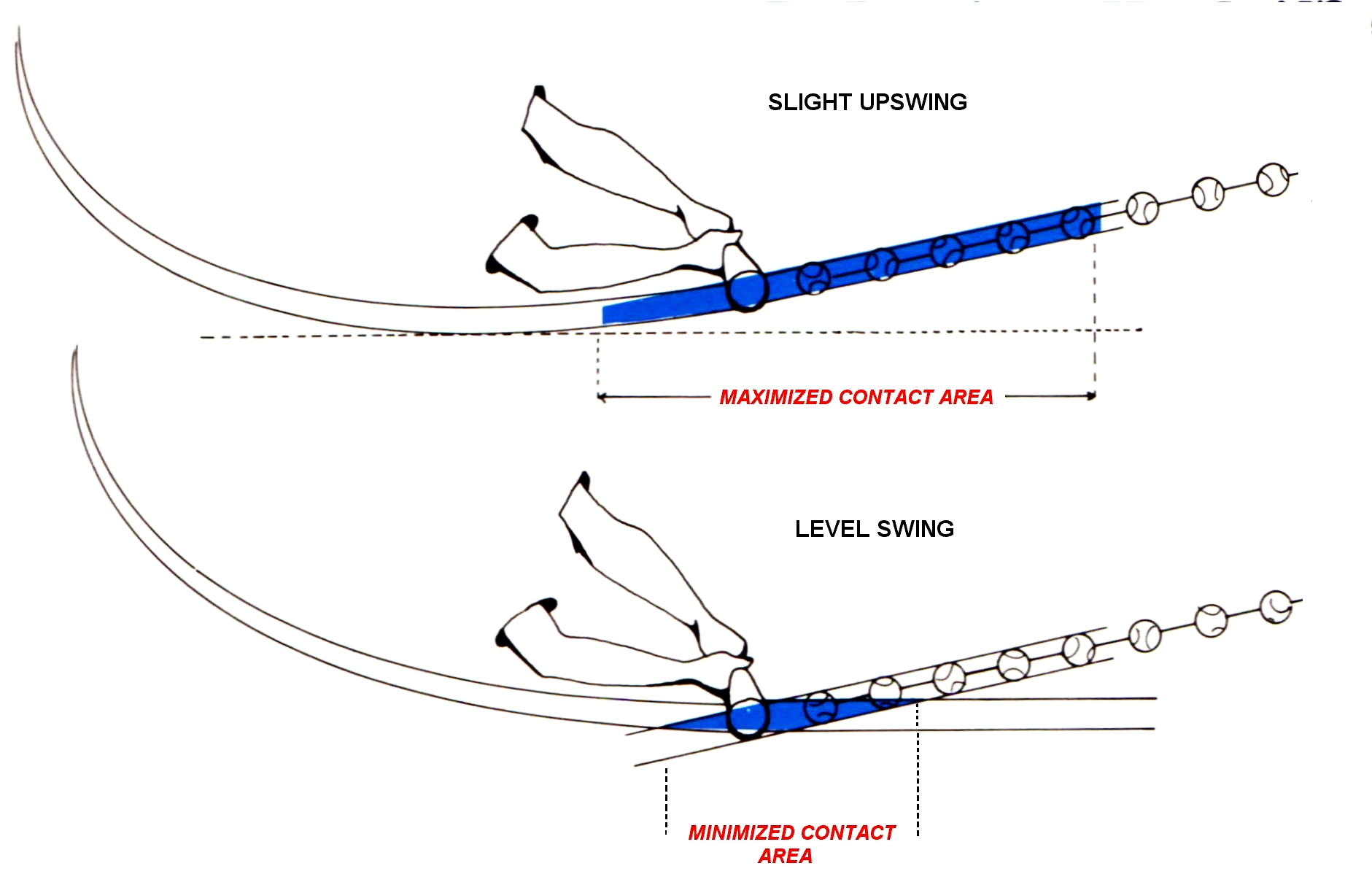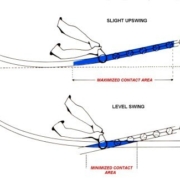Cut Down On And Strikeout Never Again Baseball Softball Perfect Swing Path Breakdown Hitting Drills To STOP Striking Out & Struggling At Plate
Learn how to cut down on and strikeout never again baseball and softball perfect swing path breakdown hitting drill to STOP striking out and struggling at the plate.
Baseball Swing Path: How-To Increase A Hitter’s Strikeouts?

Notice the Chris Davis baseball swing plane is up, up, UP. Mandatory Credit: Debby Wong-USA TODAY Sports
Is Chris Davis taking more of an extreme uppercut on the baseball swing plane?
Is he not cutting down on his swing with 2-strikes?
Is he using an excessive barrel tilt, before he launches into the turn, much like Josh Donaldson did between the 2013 and 2014 seasons? CLICK HERE for this Athletics Nation post titled, “Josh Donaldson: Changes in Approach & Mechanics”.
Is he more susceptible to swinging at pitches out of the strike zone than say a Joey Votto? CLICK HERE for this great “Joey Votto on Hitting” FanGraphs.com article about the changes he made to his baseball swing path in 2013.
Or, is his baseball swing plane so stubborn as to not adjust to higher Effective Velocities (EV), according to this fantastic analysis by Perry Husband…
SCIENCE-BASED TRAINING:
Improve your hitting strategy dramatically by applying human movement principles.
Learn not only how and what to train but also the science behind the methods.
Also, CLICK HERE for a Joey Votto video analysis I recently did. He is the ultimate Pitch-Plane Dominator!
Here’s another perspective, from a guy I admire because he will readily admit he was wrong – on national television!!
Check out the following video of Carlos Pena offering an explanation to the increase in MLB hitter strikeouts…
Look, hitter’s are dealing with hitting a pitch that, beforehand, they DO NOT know what:
- Pitch it is,
- Speed it is, and
- Location it is.
Sure, there are probabilities, but they’re almost NEVER 100% sure (stealing signs and/or a pitcher’s ‘tells’ aside).

Illustration from Ted Williams’s The Science Of Hitting book on matching the plane of the pitch. The bottom image can even serve as the extreme uppercut if flipped upwards.
Hitters have to build a large margin for error into their swings, if they want to succeed.
Then it got me thinking…
Sometimes we can learn more from what not to do, than what to do.
Coaches & instructors, I’d love to hear your thoughts.
Please ‘Leave a REPLY’ in the comments section below to the following question…
What are the 2 biggest baseball swing path mistakes you think hitters make that lead to higher strikeouts?
- Fix Late Swings Fast: 2025 Pitch Recognition & See-Decide-Swing Training for Youth Baseball Power Hitters - October 6, 2025
- Safe Youth Weighted Bat Training: Proven Overload/Underload Drills to Increase Exit Velocity in Games Starting Tonight - September 29, 2025
- AI Coaching Course 2025: Youth Baseball & Softball Practice Plan + Off-Season & In-Season Workout Builder Fast - September 23, 2025













As for Chris Davis, he bars his front arm to the extent he makes his swing loopy, which gets him off swing plane.
Harold Reynolds is always entertaining but he overlooks where the hitters he cites stand in the batter’s box. Also, these hitters he cites are out over their rotational axis, which technically is lunging, especially Hank Aaron.
Joe, I agree, early arm bar hitters will be slower to the ball, which results in a decision to swing needs to be made sooner. This leaves room for later break and more pitch deception. Although, I’m not sure the early arm bar takes a barrel off the plane of the pitch. Yes, where hitters stand in the batter’s box is omitted, AND the camera angles were all over the place with each hitter. He wasn’t comparing apples to apples for sure. We see hitters, most of the time out in front, coming off their rotational axis like you mentioned Hank Aaron. Bautista is another that tends to do this. However, these hitters are still obviously effective. This goes to show that the swing is neither linear or rotational, it’s a bit of both. I don’t care which hitter is talked about, from Ichiro and Jeter, to Pujols and Bautista. The swing is actually linear (FoMo), rotational (turn), linear (impact and follow through).
I’ve been coaching high school baseball for 14 years and in the last five or six I’ve done away with a 2k swing and leaned more towards a 2k approach. I believe that the two main reasons hitters strike out are anxiety and poor pitch recognition. I also think that they both contribute to each other. To fix this, I believe it to be easier to fix the recognition so it can positively affect the anxiety, rather than treating the anxiety by some quirky psychobabble.
This past year in Orlando at the ABCA, one of the last speakers was Dr. Peter Fatte (I think that was his name) and he was duoed with some hitting coach. They had an awesome presentation on pitch recognition and tracking by using video and occlusion. I tried a sample on my hitters, and I believe it really helped. This year, I plan on filming all of our pitchers’ bull pens and posting them up on a private website so that our hitters can test themselves on recognition anywhere they have Internet. Our football team also hast the video to the sideline technology which I plan on making it video to the dugout this spring.
James, you mentioned two very important pieces to the puzzle, in anxiety (emotional state) and pitch recognition (tracking). Interesting talk at the conference I’d say…did Dr. Fatte have a particular software or program that he recommended? I’ve been thinking of taping pitchers throwing random pitch bullpens and displaying them for hitters to work on their pitch recognition as well on the blog. Although they must sit sideways (like they’re hitting) when practicing that off the computer. There’s nothing better for a hitter than sitting in passively on bullpens (helmets on of course). Practice using broad and fine focus and picking up the window of release. There are a couple other things I’d add to pitch recognition that hitters should naturally be decoding, and that’s pitcher “tells”, and recognizing pitch patterns. Most elite hitters do all three things decent. Great comment coach!
So your gonna throw tour pitchers under the bus and make them less effective to hitters, WOW! ?
As a former professional hitter and based on feedback from coaches I dealt with during my time in the minor leagues, i think its much less mechanical at that level and more anxiety driven. Its about having an approach with 2 strikes rather than a mechanical change..Couple that with the fact that no one cares about strikeouts so long as you hit 40 bombs and drive in 100 runs and you have your answer..Mike Trout strikes out roughly 140 times a year and we view him as one of, if not, the best hitters in baseball.
Coach Mac, I totally agree…Major League hitters/coaches/scouts these days don’t care about the quantity of strikeouts, IF they’re producing offensively. I think anxiety is a major issue, and having a 2-strike approach mentally, and not changing mechanics are keys too. Great comment and from a credible source 😀
No one ever talks about his walk totals…
Check them out !!!
There are many different breakdowns of the swing according to coaches I read about and watch on the net. Some have 4 parts, some 6, and some 7 etc … However you want to break it down, there are places in the swing where you can/need to/want to slow down – one of them is NOT bat speed. Ideally … if you are going to make adjustments, it shouldn’t be done by slowing down the bat (and when I say slowing down the bat I mean everything that happens once the bat starts moving toward the point of contact). In the real world it happens, but that’s not where you WANT to do it. There are a lot of things that can happen to cause a batter to strike out. Most of the time when it’s a swing and a miss type of strike, it’s because the hitter waited until the bat was being swung before they made their adjustments to the pitch. If you could throw the exact same pitch 5, or 6, times in a row, they may not square up the first or second one, but by the end they’d be bringing the bat through at their top velocity and crushing it. That’s because they’d make whatever tweeks necessary before they swung the bat so that they could swing hard.
Many coaches say “Slow the swing down” with two strikes. Guys like Trout and Mickey Mantle don’t/didn’t do that. They swung hard and they struck out a lot. My point is … you shouldn’t learn or teach a different bat path, bat speed, or swing plane to avoid striking out. The hitter should learn to make adjustments somewhere else.
Awesome point Bob! And I agree. I also used to hear (and still do) ‘be short’ or ‘shorten up’ with 2-strikes. To me, it registers to cut down on the swing by swinging down on the incoming pitch. This is cutting your nose off to spite the face. We want more barrel on plane, not less, with 2-strikes. The margin for error must be built into the swing. As we all know, hitting isn’t a perfect skill. A hitter WILL be off balance more times than not, so the barrel path must be tight (in the beginning), smooth (like the NIKE swoosh insignia) and solid (meaning no extreme uppercuts or down swings).
Joey,
Couldn’t agree more about how the swing transitions through its phases – linear, rotational, linear.
I wasn’t referring to Chris Davis’ arm bar. I wasn’t referring to an early arm bar but how he bars his arm through the final turn into contact. His front arm is not bent at contact. I believe his lengthens his swing and makes it loopy. He gets away with it because of his size and physical strength.
As far as the Reynolds piece, these guys were lunging, though, as you say, still effective. Let the ball travel does work for outside pitches, not all pitches. A hitter wouldn’t want an inside fastball to travel – he’d get jammed.
Joe, barring the front arm at impact will depend on being late or early, and pitch location. I’m sure Davis’s front arm isn’t barred on inside pitches in addition to up in the zone. You’ll see a lot of elite hitters get to straight on pitches that are low in the strikezone and outside…that’s the “linear” end of the swing.
At the last abca in Nashville, I was in on the hot stove and perry husband did a presentation on the lead arm being extended at contact. He compared hr derby contestants vs their own results. Consequently, when the front arm was straight at contact, ball exit and distance were greater than when their lead arm was bent.
Right on James!
I agree with Perry Husband in that hitters should make it a goal to get to impact with a longer front arm.
However, I don’t agree in getting a hitter to bar that front arm out early on, pre-turn.
It’s a simple Conservation of Angular Momentum issue. Here’s a short 2-minute Circus Physics video from PBS on this movement Principle: http://www.pbs.org/video/1607951704/
An ice skater speeds up by tucking her arms in towards her rotating middle. She slows down by extending her arms away from her rotating middle.
What’s going on here?
Rotating speed goes up when the rotation is tighter (bending the arms), but inertial mass decreases. Inversely related, when the arms go out, her inertial mass increases, but her rotating speed decreases. This is how Angular Momentum is conserved.
So, unless like Perry teaches, Pitch Recognition and Strategic hitting game plans against specific pitchers is supplemented, I don’t see the logic in teaching hitters to early arm bar, pre-turn.
Why?
Because barring the front arm out early will slow rotation down, and on higher perceived velocities to the hitter, high or inside the strike-zone, why would we want our hitters to turn slower at the beginning of the turn? Again, this would be applicable to what Perry Husband refers to as Reactive Hitting.
Guys, I would say that about explains it.
I had a couple people comment about this post on Facebook:
Ronnie Weber – Ted Williams said the most important thing in hitting is to get a good pitch to hit. Don’t swing at bad pitches, don’t take pitches you should hit. Never easy when you get behind in the count.
Ryan Lehr – to take too many strikes early. Getting behind in the count.
Joe, I am a high school coach and find that the majority of my hitters do not know what to look for. They get the batters box with know preconceived idea of what they need to do. They get in the batters box, get set, then take a perfect strike down the middle. Now they are behind in the count. Batters need to have an idea of what pitch hey re looking for and when they get it, they need to pull the trigger. You can’ be a successful hitter hitting from behind.
Coach John, another great point. I was never taught a planning in High School. Actually I never really developed a plan at the plate till my Senior year in college, when a new head coach taught it to us. Would’ve been nice to have some time to perfect that plan starting in High School.
I coach travel softball and use Right View Pro to teach hitting to girls from age 8-23 years old. The biggest thing I have found to help girls be more productive is to really promote releasing to and throw the ball regardless of where the pitch location is. The key to being able to get this release is to control the hips at the beginning of the swing with creating pressure on the inside of the legs. Hitters who start their swings with the rotation of the hips first tend to float into their swing which causes them to lose balance. Think about it. When you lose your balance what is the first thing a person does? They put their hands down. This is what happens with most hitters that don’t create pressure in the legs, causing them to drop their hands and tuck their elbows into their sides and become connected. A hitter that does this will have very little wrist release and less drive on the ball. Look at all great hitters and you will see how they have good resistance from the front leg to the front hip, match the plane of their bat with their shoulders, have great balance and great release into the ball. I teach all my girls to plan for a high inside strike ever pitch. That way they can work and down to make a smooth release to and thru any pitch. I want the to try and hit the pitcher with every ball they hit. Middle Middle every time. Just my 2 cents but it works. We need more coaches at the youth and HS levels that have a clue. To many times we have teachers who want a extra income who take HS coaching jobs, and unfortunately we have to take any volunteer we can find at the youth level.
Great comments Matt! Can’t argue with success 😀